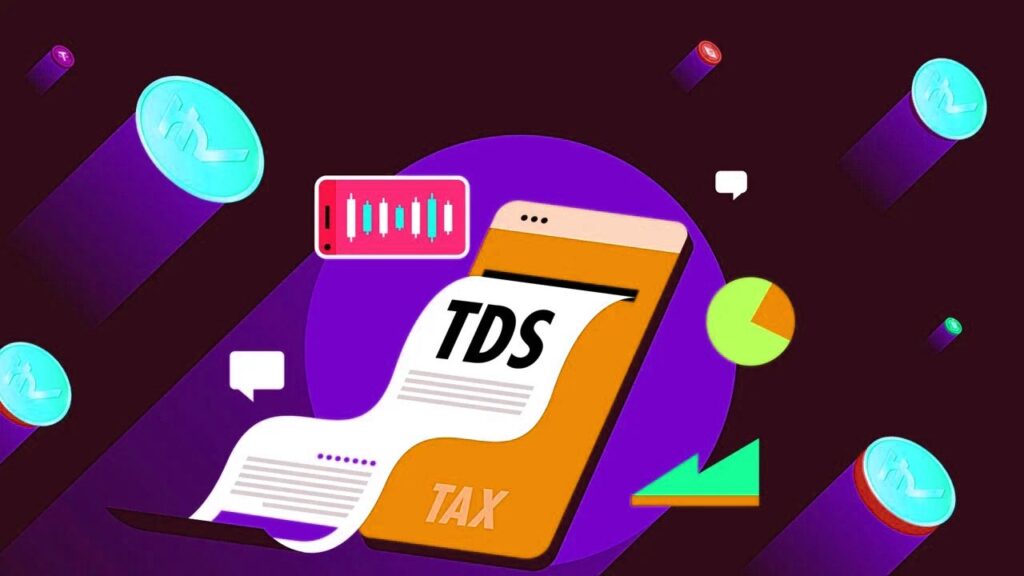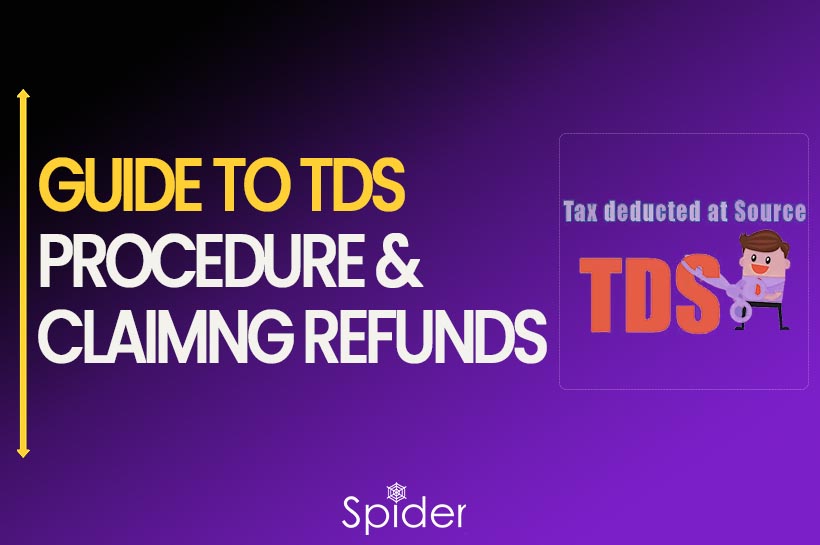What is TDS?
Tax Deducted at Source is a way for the Indian government to collect taxes directly from the income source. At the time of receiving money, certain amount is deducted as tax and paid to the government on your behalf. It applies to various types of income like land sales, commissions, and more.
Also, acts as a preventive measure against tax evasion and it’s crucial for both recipients and payers in India to grasp its functioning.

Deduction of TDS by individuals and HUF
Irrespective of unaudited books, individuals or HUFs must actively deduct the tax for certain payments. In cases where rent payments made by individuals or HUFs exceed Rs. 50,000, Tax deduction is required., may be liable for deduction of income tax @5%. Applying for a Tax Account Number (TAN) is not necessary for such persons.
Procedure
The payer must follow the steps mentioned below for the deduction and payment of TDS (Tax Deducted at Source).
To calculate the correct tax deduction, analyze payment nature, relevant laws, interpret TDS rules, and examine case laws accurately.
Deduct the amount ascertained as TDS and deposit the said deducted tax with the Central Government by the 7th of every month or other applicable.
Most transactions require the filing of Tax Deducted at Source (TDS) Returns on a quarterly basis. The filing deadlines for each quarter are as follows: 1st Quarter – July 31st, 2nd Quarter – October 31st, 3rd Quarter – January 31st, and 4th Quarter – May 31st. The TDS return must be filed within 30 days from the end of the month in which TDS was deducted for transactions related to the sale of property or payment of rent.
Issuance of TDS Certificates to the Payee. (Form 16, Form 16A, Form 16 B and Form 16 C- depending on the transaction)
Remember to complete specific tasks related to tax payment within a designated timeframe. If you don’t follow these rules, you may have to pay extra money as interest or penalties.
The denial of expenses or the possibility of legal action under Section 276B.
How to Claim TDS Refund ?
Steps For Filing The TDS Return Claim
- If your employer deducts excessive tax, you can claim a refund by filing a TDS refund request. You can claim the difference amount by filing an income tax return.
- Provide the bank account number, name of the bank, and Indian Financial System Code (IFSC) details for successful processing.
- If you know that the TDS is payable in any financial year, you need to file Form 13 under Section 197 to avail of a lower-income tax deduction benefit.
- To obtain a refund of TDS deducted from the bank, you need to follow these steps.
- Declare the income, and the Income Tax department will refund the amount to the bank account.
- Submit Form 15G to the bank for no source deduction if your salary is not taxable. TDS on fixed deposit interest is not applicable for pensioner.
How to Claim TDS Refund Online?
Filing income tax returns is a straightforward step in the process of claiming a Tax Deducted at Source (TDS) refund online. The steps are:
- Go to incometaxindiaefiling.gov.in and sign in over there
- Fill in the relevant details in the applicable Income Tax Return (ITR) form.
- On submission of the ITR, the portal generates an acknowledgment.
- E-verify the acknowledgment through the digital signature, net banking account, or an Aadhaar-based one-time password (OTP)
What is the Time Frame for TDS Refunds?
Timely tax filing results in refund deposits into your bank account within three to six months. Prompt completion of the online verification process is crucial for a speedy refund. Tax refunds are often issued within a month of processing your tax return.
Click here to check out our New Blog on Why NSE has shifted Bank Nifty Expiry on Friday?
Disclaimer: The information provided in this Blog is for educational purposes only and should not be construed as financial advice. Trading in the stock market involves a significant level of risk and can result in both profits and losses. Spider Software & Team does not guarantee any specific outcome or profit from the use of the information provided in this Blog. It is the sole responsibility of the viewer to evaluate their own financial situation and to make their own decisions regarding any investments or trading strategies based on their individual financial goals, risk tolerance, and investment objectives. Spider Software & Team shall not be liable for any loss or damage, including without limitation any indirect, special, incidental or consequential loss or damage, arising from or in connection with the use of this blog or any information contained herein.





